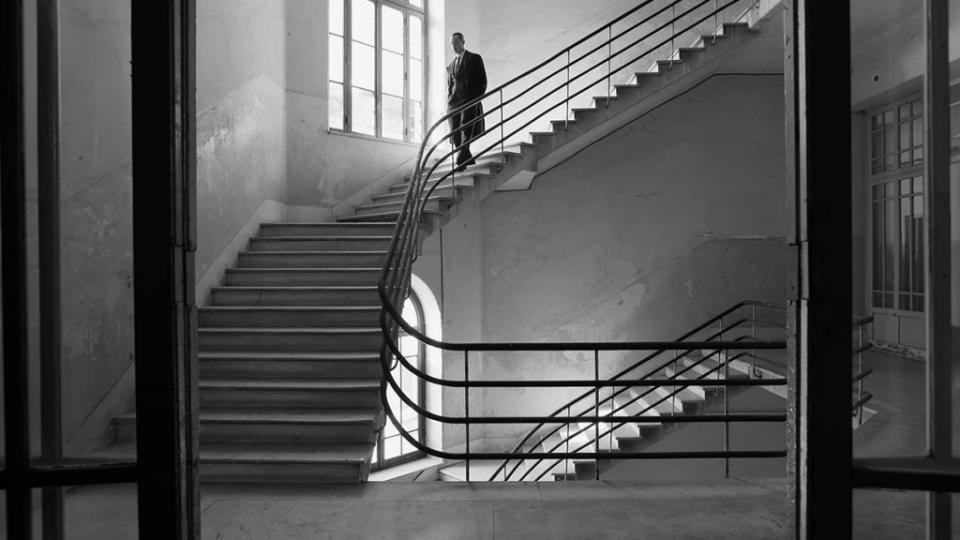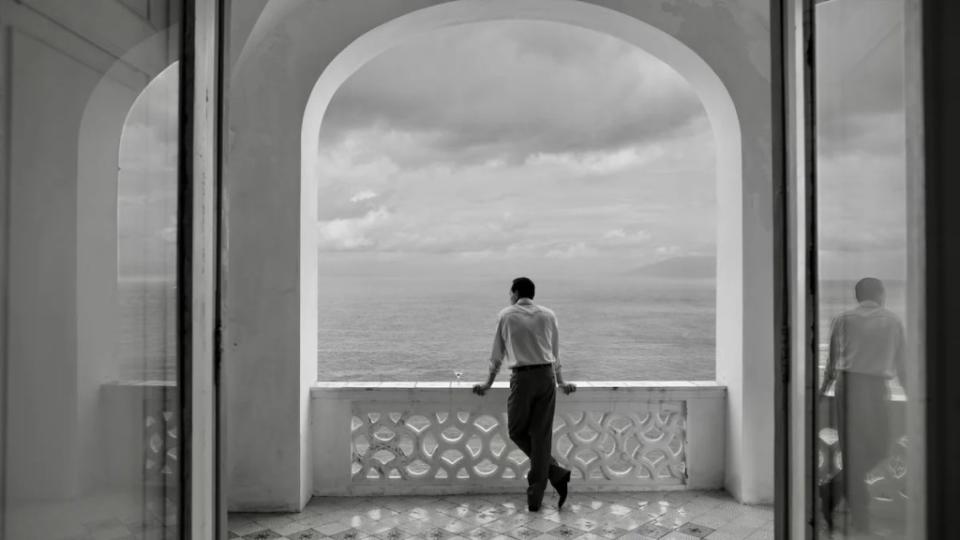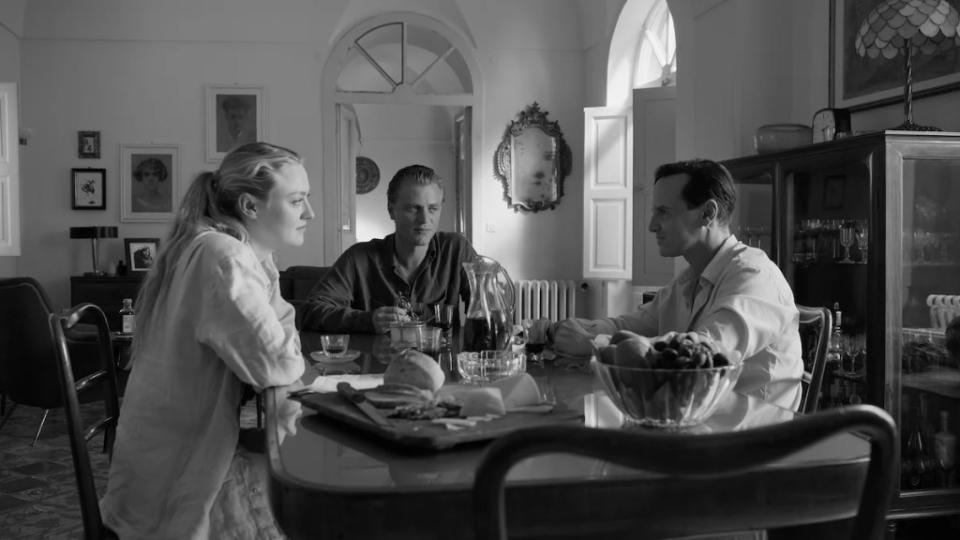Shadows, Classic Movies and Caravaggio: Inside the Lush Cinematography of ‘Ripley’
Director Steven Zaillian might not have used black-and-white cinematography in past projects, but thankfully for him, his director of photography had in a very big way. Cinematographer Robert Elswit (an Academy Award winner for Paul Thomas Anderson’s “There Will Be Blood”) was the right choice to bring Patricia Highsmith’s expert grifter and murderer Tom Ripley to illustrious B&W life in Netflix’s “Ripley.” And this project was a whole lot easier than the craftsman’s last monochrome effort, George Clooney’s 2005 film “Good Night, and Good Luck,” which earned him his first Oscar nomination.
That one was shot on film, with its sets painted in black and white using numbers that would correspond to the desired shade of black, grey or white. For “Ripley,” though, there was no need for numeric nudging. Elswit had previously worked with Zaillian on HBO’s Emmy-winning limited series “The Night Of;” this time, their vision was to make a series that went back to the stark sociopathy of the Highsmith novels rather than the romanticism of, say, Anthony Minghella’s celebrated 1999 feature “The Talented Mr. Ripley.”

“Steve felt that in the Minghella movie, talented was used ironically,” Elswit said. “He was just a lucky, foolish, sweet-natured Joe, who ends up having to do these things. Steve wanted to depict Tom the way Highsmith wrote him, and his great gift was that he could have a two-minute conversation with you and know exactly who you were.”
The 1960s-set mystery draws on a rich lineage of past B&W films. “I think what Steve loved about the classic black-and-white period is that you’re telling unusual stories or difficult stories about complicated people,” Elswit said. “It’s all about the light and dark. When you look at black-and-white images and Caravaggio paintings, it’s so compelling because what makes them stand out is an internal structure, the distances and differences between the brightest whites and the darkest darks.”
The result is one of the lushest looking television projects in recent memory, sitting comfortably with “Good Night, and Good Luck” and even Steven Spielberg’s “Schindler’s List” (written by Oscar-winner Zaillian) in which the black-and-white photography becomes its own unique character and forces the viewer to use their imagination in surprising ways.

A chief example is a ubiquitous robe of Tom’s that other characters call “hideous,” though the audience can only imagine its color scheme. And even more impressive is that all but one key scene was shot in some version of silhouette, shading, or overcast sky.
“Steven was absolutely adamant he wanted the big murder scene to be overcast,” Elswit said. “We had to have a very controlled environment. We shot in essentially a green screen pool. The backgrounds and the skies and much of the water were created, but we had to control the light on the boat and on the actors, so the sunlight was always filtered and made to look like diffuse skylight through clouds.”

But perhaps the greatest tool Elswit had was the face of Andrew Scott, stepping into a role made famous by actors as diverse as Matt Damon, Dennis Hopper, Alain Delon, Barry Pepper and John Malkovich (you just might see one of them pop up here).
“Andrew had this kind of remarkable face, that he could be almost anything, he’s such a great actor,” Elswit said. “I was astonished by how in lighting his face, he can seem like the most cherubic, good-natured human being in the world. And then put him in a different lighting setup, and he was terrifying. You don’t feel like you’re ever watching anyone act.”

The post Shadows, Classic Movies and Caravaggio: Inside the Lush Cinematography of ‘Ripley’ appeared first on TheWrap.

 Yahoo News
Yahoo News 
